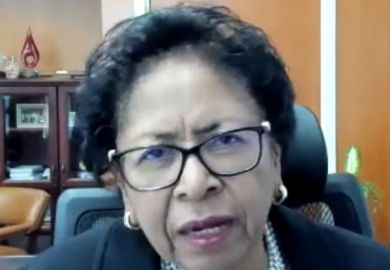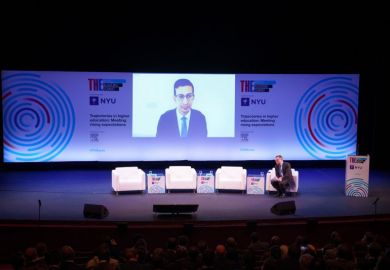As university leaders around the US search for ways to fight inequities in education, one of their colleagues out on the West Coast is about to step down with a well-established formula for how it can be done.
For years, the California State University (CSU) system has had numerous campuses ranked among national leaders as measured by taking students from low-income backgrounds and graduating them into high-paying careers. And at the very top of that list is the CSU campus in Los Angeles, where one in 10 students arrive from the bottom 20 per cent of the nation by family income and end up with a job ranked in the top 20 per cent, bucking the trend seen at most US institutions.
Cal State LA’s president for the past decade has been William Covino, a first-generation college student and a career academic. In an interview ahead of his retirement at the end of the current academic year, Dr Covino offered several reasons why Cal State LA is so successful in fulfilling academia’s image of itself as a crucible for creating social equity – starting with the overall culture of the 27,000-student campus.
He doesn’t claim credit for that, saying he arrived in 2013 and immediately encountered alumni talking about the importance to their lives of graduating from Cal State LA and faculty genuinely determined to figure out ways of helping students.
“This has been in the DNA of the university for a while,” Dr Covino said. “When I got here as president – the first two months I was here, talking to different faculty groups – that’s all they wanted to talk about, was student success,” he said. “Which you don’t hear at every university you visit.”
Student attitudes are also an essential element, Dr Covino said. Cal State LA sits just a few miles east of downtown, alongside the main concentration of poverty in the nation's second-largest city. Both research studies and Cal State LA’s own experience show first-generation students to be “remarkably resilient” when given a chance, Dr Covino said.
“They don’t come here with a sense of privilege – they come here with a sense of eagerness to have a university education,” he said. “They’re the first in their families, they are in essence the emissary from their families that is going to light the way for all the other siblings and others who want to go to college, and show them that it can be done.”
CSU – reputationally a tier below the renowned University of California system – has played that crucial societal role in Los Angeles and beyond since at least the 1970s, Dr Covino said. “There’s a sense that we were sort of the dinner-table destination talk for many families at that time,” he said, “because there wasn’t as much choice for universities.”
On top of those two factors of faculty and student commitment, Dr Covino has added his own – by going all the way back to kindergarten. He picked out some of the city’s public schools and, starting in 2015, began visiting them to invite five-year-olds to enrol in college. “Kindergarten students all over LA got an admission letter from me welcoming them to Cal State LA and talking about them staying focused,” he said.
The idea was soon extended to first-graders and beyond. Cal State LA isn’t literally granting admission to thousands of kindergarten and grade-school students who are not yet ready and for whom it has no space. The admissions “offer” instead is described to the students as conditional upon high school completion with good grades, and serves to create awareness and set expectations.
“That is a process that I would call making access more visible,” said Dr Covino, whose university was getting over-enrolled by 25 per cent when Covid hit. “That’s one factor in our success – just becoming more visible as the region’s university for primarily first-generation students.”
Despite the successes, Dr Covino is leaving under accusations he has failed to protect Cal State LA’s deep commitment to service and equity. He announced his decision to retire a few months after the university’s academic senate, in an overwhelming but sparsely attended vote, approved a motion of no-confidence against him.
The faculty acted after a black professor of pan-African studies, Melina Abdullah, was forcibly removed by police from an on-campus debate of Los Angeles mayoral candidates.
Professor Abdullah was causing no commotion but apparently was not among those permitted to attend. Faculty called the police action a violent overreaction that was part of a pattern of racial and sexual abuse that Dr Covino had not sufficiently confronted. Dr Covino has declined to discuss the matter.
POSTSCRIPT:
Print headline: How CSU bucked inequality trend
Register to continue
Why register?
- Registration is free and only takes a moment
- Once registered, you can read 3 articles a month
- Sign up for our newsletter
Subscribe
Or subscribe for unlimited access to:
- Unlimited access to news, views, insights & reviews
- Digital editions
- Digital access to THE’s university and college rankings analysis
Already registered or a current subscriber? Login








